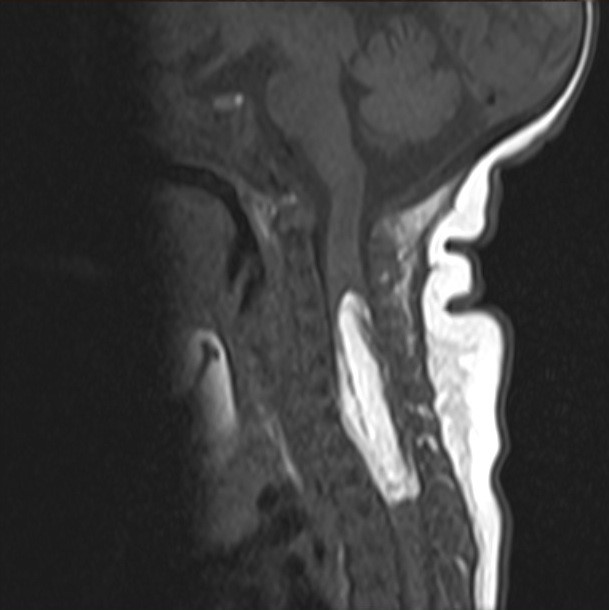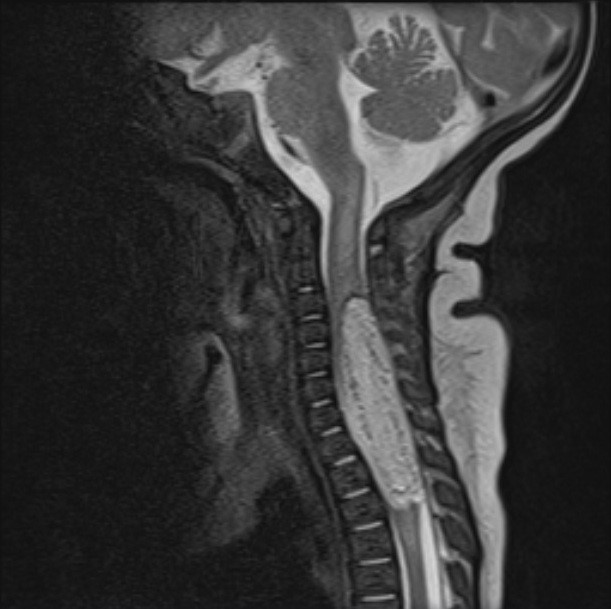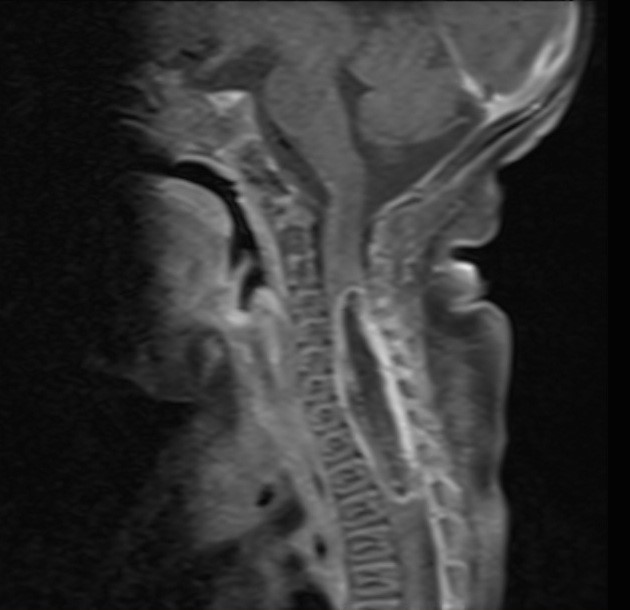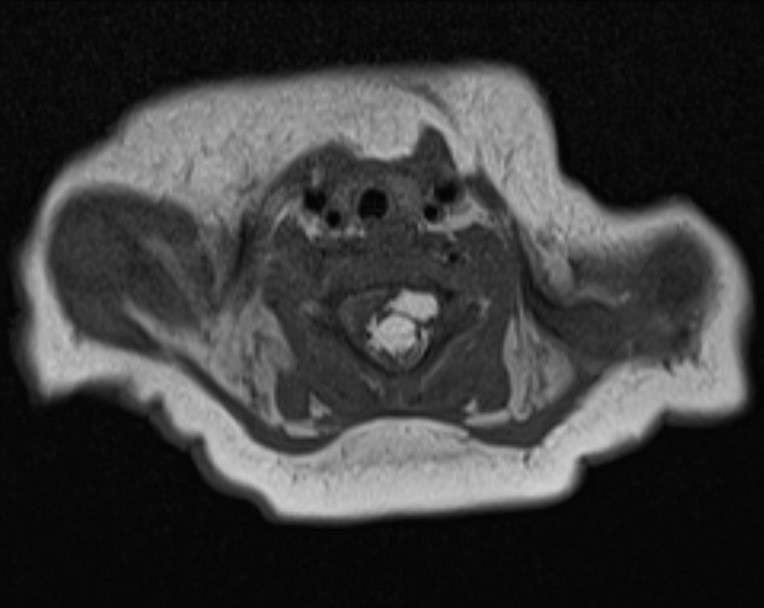Answer of October 2014
For completion of the online quiz, please visit the HKAM iCMECPD website: http://www.icmecpd.hk/
Clinical History:
A full term, one-month-old baby girl presented with progressively decreased bilateral upper limb movement for 1 week. Physical examination found flaccid and hypotonic upper limbs. Neurologic exam of bilateral lower limbs were normal. MRI of cervical spine was performed. (4 Images: Sagittal T1W, Sagittal T2W, Sagittal T1W FS C, Axial T1W)
Diagnosis:
Cervical intraspinal lipoblastoma
Discussion:
MRI demonstrates a well-circumscribed expansile intraspinal fat signal mass with enhancing component extending from C3 to T3 levels. The cord tissue is displaced and compressed with cord edema cranial and caudal to the mass. Posterior vertebral scalloping can be seen, suggesting the chronicity of the lesion. In a newborn, this is suggestive of an intraspinal lipoblastoma.
Lipoblastomas are benign encapsulated mesenchymal tumors composing of variable amount of lipoblasts and mature adipocytes. Its diffuse form is termed lipoblastomatosis. The tumor occurs almost exclusively in infancy and childhood, and is rare after the age of three. Male is affected more than female. Presenting symptoms are related to the location and size of the tumor. The sites of involvement are usually the limbs, trunks and necks. Intraspinal presentation is unusual.
In infancy and childhood, a well-defined soft tissue tumor with predominant but not exclusive fatty component should suggest a lipblastoma. The main differentials include lipoma, liposarcoma and teratoma. True lipomas are rare in children and the presence of non-fatty components should alert the radiologist to the diagnosis of lipoblastoma. Liposarcoma is extremely rare in young children. Although distinguishing lipoblastoma and liposarcoma by imaging alone is often not possible, the age of the patient helps to suggest the most likely diagnosis. Teratomas are common in young children. However, these lesions often have calcification or ossification, which is not a feature of lipoblastoma.
Treatment of lipoblastoma is by surgical excision. Although local recurrence was reported in up to 20% of patient after surgery, the tumor has no malignant potential and may even mature into lipoma or show spontaneous resolution.



